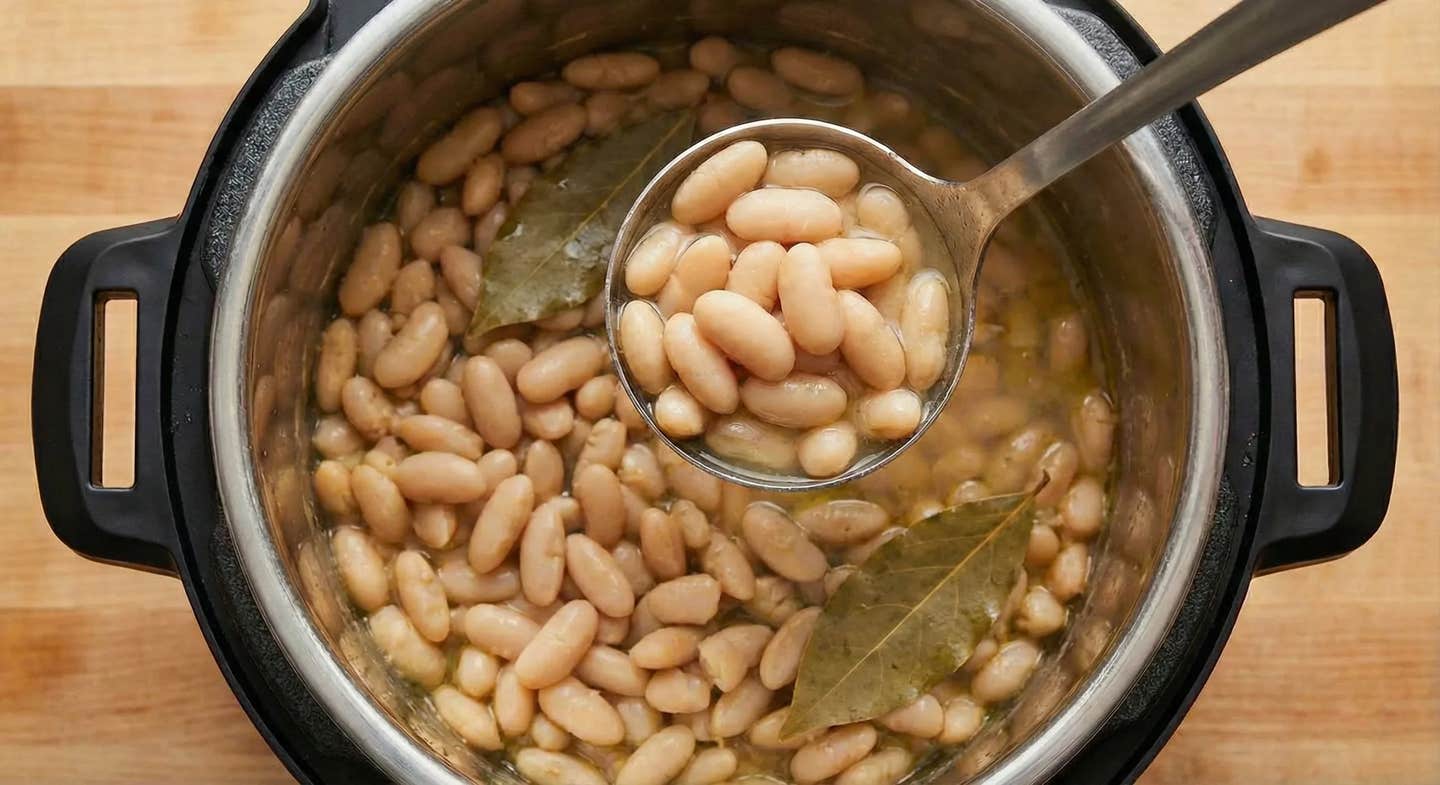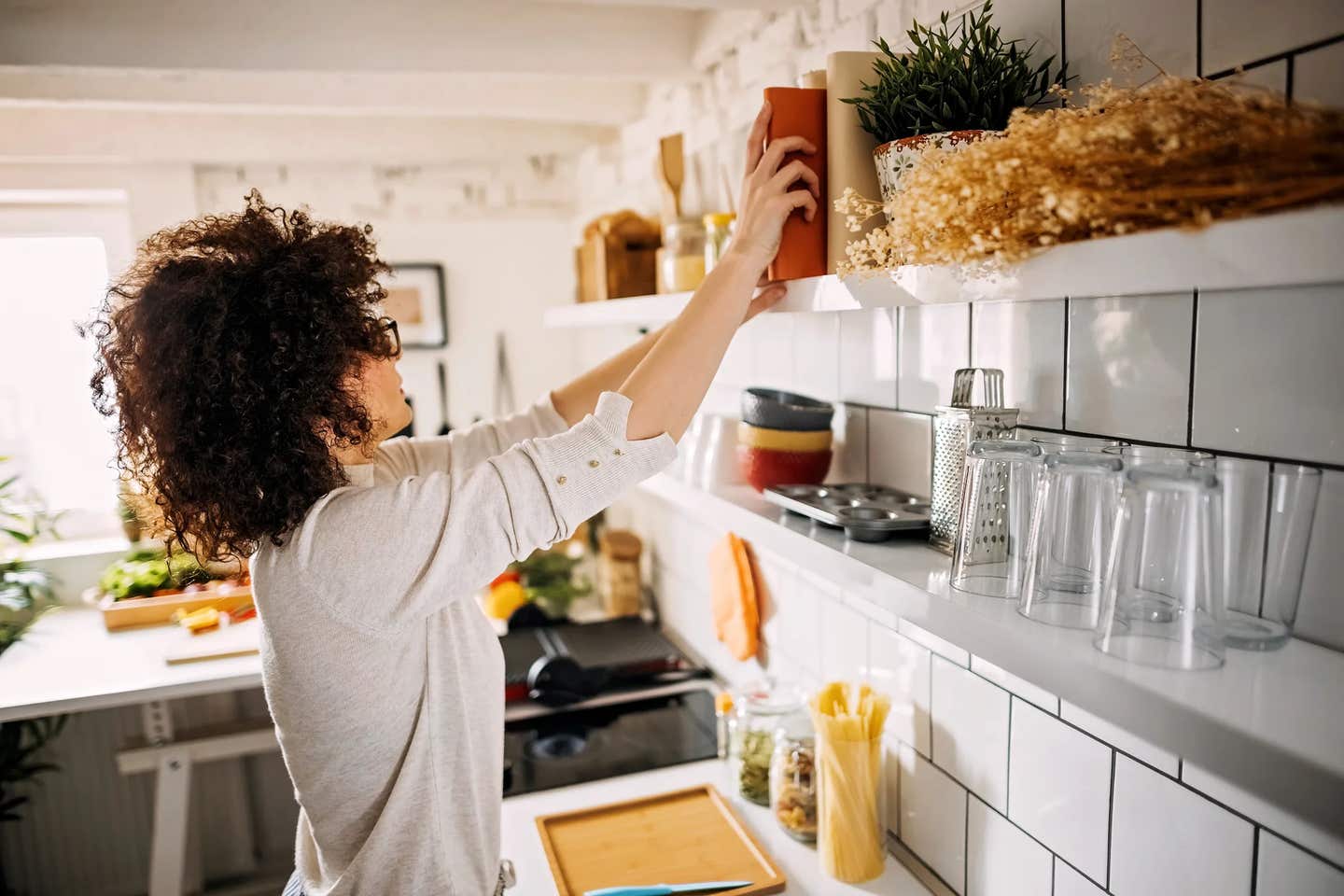
How to Make Perfect Instant Pot Beans, Every Time
- Soak or don’t—both work. Presoaking speeds things up and may help the beans cook more evenly.
- Use the right ratio: 3 parts liquid to 1 part beans; don’t fill the pot past halfway.
- Add aromatics (onion, garlic, bay leaf, kombu) for deeper flavor.
- Err on the side of undercooking. Finish on Sauté if needed.
- Always natural-release to protect texture and prevent foaming.
Ready to take your Instant Pot beans to the next level, or just get your next batch just right? Here are the tips and tweaks that make all the difference between a good pot of pressure-cooked beans and a great one.
1. Make the soaking process work for you.
One of the Instant Pot’s biggest selling points is that there’s no need to soak dried beans before cooking them. Unsoaked beans take longer to cook (generally between 20 and 40 minutes; see chart below), but they’re still ready in under 2 hours, including pressurizing and release time.
If you do have a bit more time to plan ahead, presoaking dramatically shortens cooking time (under 15 minutes once the Instant Pot has come up to pressure), and some cooks find presoaked beans easier to digest and more reliably evenly cooked. There are three ways to do it.
Slow Soak
For plan-ahead cooks, the slow soak is the best option. Place the dried beans in the Instant Pot, cover with 2 inches of water, and let stand at room temperature for 6 to 8 hours. Drain, then cook as directed.
Quick Soak
Place the dried beans in the Instant Pot, cover with two inches of water, then bring the water to a boil using the Sauté function. Turn off the heat, and let the beans soak for 1 hour before draining.
Delay Start Soak
This is a great set-it-and-forget-it Instant Pot hack. Place the beans and cooking liquid (see ratios below) in the Instant Pot, seal, then use the Delay Start button to set the cooking time to start in 6 to 8 hours.
2. Actually measure your beans and liquid.
When it comes to perfectly cooked beans, having the right ratio of liquid to beans can make a big difference. Forget those vague “cover with water” instructions. Instead, count 3 parts liquid to 1 part beans (e.g., 6 cups liquid for 2 cups, or 1 lb., of beans). The triple dose of water is enough to cook both presoaked and unsoaked beans. If you’re worried about the unsoaked beans absorbing too much liquid, you can increase the amount to four parts.
Another important tip: Never fill the Instant Pot more than halfway full when cooking beans. As the legumes cook in a pressurized environment, their liquid tends to foam. When the pot is too full, the foam can reach the lid and clog the pressure valve.
3. Infuse the beans with flavor.
One simple way to kick up the flavor is to swap in low-sodium vegetable broth for water. Another is to add a bay leaf or a piece of kombu seaweed to add umami and complement the beans’ natural earthy taste.
Here are a few other flavorful add-ins to try with a 1-lb. batch of dried beans. These amounts will enhance, not overpower the beans’ taste, so you can use them in most recipes. Just be sure to remove add-ins from the beans before serving.
- 1 small onion or 1 large shallot, peeled and quartered
- 2 unpeeled garlic cloves, smashed
- 1 medium carrot or 1 large stalk of celery, cut into 3 or 4 chunks
- 1 sprig fresh or dried rosemary, oregano, or thyme
- 1 sprig fresh parsley
- 1 green leek leaf
- 3 coins fresh ginger
4. Err on the side of undercooking.
The one downside to all Instant Pot cooking is that you can’t check foods for doneness during the pressurized cooking cycle. For beans, that means you need to rely on recommended cooking times (see the chart below), then make adjustments. “There are so many factors involved—type of beans, age of beans, amount of beans, amount of liquid, type of liquid, pressure cooker model, etc.,” explains Julia Newberry, general manager of Rancho Gordo Beans and co-author of The Bean Book. “You may need to experiment to come up with a method that works for you.”
As a general rule, start with the shortest cooking time. If the beans are too firm, simmer them on the Sauté setting until they reach desired doneness. And if your beans come out a bit too soft? Not to worry, says Newberry. “Instant Pot beans are great for chili, soup, or bean dip, where the beans can be a little overcooked.”
Instant Pot Cooking Times
| Type of Bean | Presoaked | Unsoaked |
| Adzuki | 6 to 8 minutes | 15 to 20 minutes |
| Black beans | 6 to 8 minutes | 25 to 30 minutes |
| Black-eyed peas | 6 to 8 minutes | 15 to 20 minutes |
| Cannellini Beans | 6 to 8 minutes | 25 to 30 minutes |
| Chickpeas (garbanzo beans) | 10 to 12 minutes | 35 to 40 minutes |
| Great Northern beans | 6 to 8 minutes | 25 to 30 minutes |
| Navy/white beans | 6 to 8 minutes | 25 to 30 minutes |
5. Always use natural release!
Allowing the pressure to release naturally helps keep cooked beans from bursting and also prevents foam from clogging the pressure valve of the appliance when steam is released.
6. Let the beans breathe.
For the most flavorful Instant Pot beans, Newberry recommends letting the beans cool, uncovered, in their broth for 20 minutes to “breathe.” This rest time allows the bean broth’s flavors to develop. “You can also finish cooking the beans … with the Instant Pot Sauté setting at least 10 minutes to reduce and concentrate the broth,” Newberry adds.
Tasty Instant Pot Bean Recipes to Try
We’ve got an all-purpose pot of beans, some tasty stews, and a pasta dish to get you started.
About the Author

About the Author
Mary Margaret Chappell
Join our mailing list
Get free recipes and the latest info on living a happy, healthy plant-based lifestyle.
By providing your email address, you consent to receive newsletter emails from Forks Over Knives. We value your privacy and will keep your email address safe. You may unsubscribe from our emails at any time.
